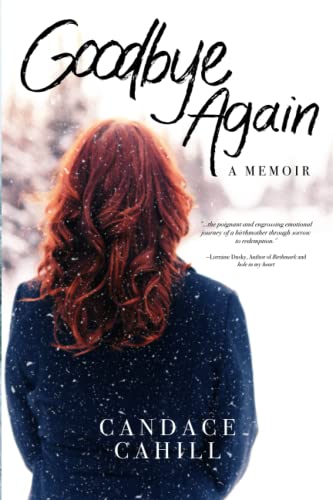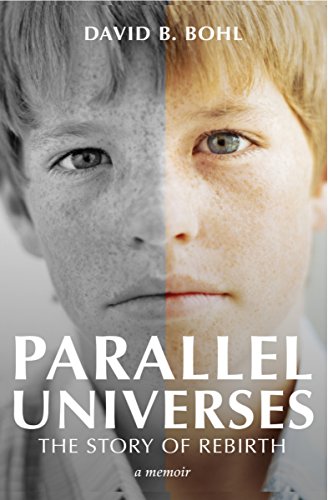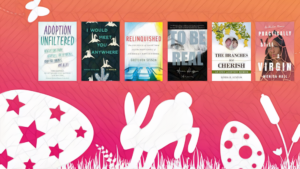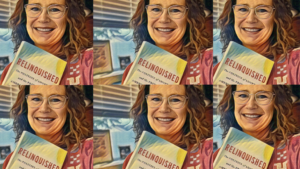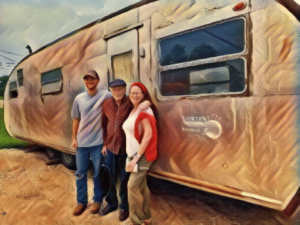Summer Reading: The Adoption Memoirs Inside this Adoptee’s Beach Bag
Where better to read an adoption memoir than on the beach in front of my childhood home,” I thought, stuffing more adoption books than I knew I’d have time to read into my beach bag.
A bottle of 70 SPF sunscreen, floppy hat, towel, and swimsuit lay helter-skelter atop, “The Gathering Place” by Emma Stevens, “Goodbye Again” by Candace Cahill, and “Parallel Universes” by David B. Bohl. I’d met all three authors a few months earlier at the Untangling Our Roots conference in Louisville, Kentucky.
My new friend Greg Gentry, podcast host on Fireside Adoptees, had told me about the event. He’d read my blog and reached out in January. We connected over a few phone calls and discussed the upcoming conference. Knowing I’d find at least one friendly face in the crowd, I decided to go. Shortly after connecting at the conference, Greg introduced me to Emma. A fellow adoptee and writer, I learned Emma had authored two memoirs. I bought her first book, “The Gathering Place,” and she signed it for me. Here’s to living life with our eyes, heart, and mind wide open!” she wrote inside the cover.
After attending an author panel, I sought out a few of the speakers, namely Candace and David. Having written my own memoir, for which I am currently seeking representation, hearing these authors’ inspirational stories buoyed my faith in my own project. At lunch, I approached David at a table he shared with several other attendees. The type to have never met a stranger, David offered me a seat, and there over turkey sandwiches I learned more about his adoption journey and the two books he’d written. One a memoir and the other a book about relinquishees, addiction and recovery. The next day, after a tap on the shoulder, David handed me a signed copy of his memoir, “Parallel Universes.” “I am delighted our roots entangled this weekend,” he’d written inside. I gushed thanks and promised him a copy of my mine one day.
I’d barely tucked David’s gift into my bag, before I spied Candace at her book table. Knowing she was a first mother, and that she’d written the memoir “Goodbye Again” about the death of the son with whom she’d met only once, I admired the courage it must have taken to write such a painful story. I had already read her blog, and listened to the Claiming Your Voice Podcast interview she did with Janeice Garrard. I knew Candace lived in Alaska, that she was beautiful inside and out, and tough as the grizzlies I imagined roaming her property.
She met me with a kind smile and attentive gaze, and as our small talk meandered into a longer conversation, she offered a chair. I sat, feeling as though I’d met a long-lost friend. “Read with a glass of wine and box of tissue nearby,” she prescribed beside her signature in the book I’d come to buy.
So it was, a few months later, as I tossed the memoirs I’d brought on my beach house bunk bed, I pictured each author’s friendly face and heard their well-ingrained voices in my head.
The Gathering Place
Upon arriving at the beach house, I’d already begun (and was almost finished with) “The Gathering Place,” so I started there. Curled up in the bunk my first night, rapt by Emma’s insightful and compelling story about her journey out of the adoption fog, I discovered the wild efforts and remarkable risk she took to find her birthparents, long before DNA or databases were a thing.
The psychological work and heavy-duty soul searching she’d obviously done to write the book were evidenced in her prose, facing emotions and embracing hurdles many adoptees grapple with for a lifetime. Having completed master’s level coursework in psychology, it shows in her narrative, as she analyzes her past and examines the behaviors of both herself and her family members along her journey. I especially appreciated the “Parts Work” she demonstrates in the construction of her chapters, and the interactions she portrays with her various selves of different ages.
Parts work originates from the Internal Family Systems Model (IFS). IFS posits that the mind is made up of multiple parts, and underlying them is a person’s core or true Self. Each part offers its own perspective, interests, memories, and viewpoint. I had explored Parts Work during a few EMDR sessions and found the work rewarding, but extremely difficult to do, especially with my teen self. Thus tears flowed freely as I read Emma’s account of a conversation with the 14-year-old Lauren part of herself, telling her, “Lauren, I’ve come to help you … I’m here to show you that you don’t have to go this alone anymore.”
I found myself underlining sentences and paragraphs, thinking, “yes, I felt that too!” or “yep, that was me.” Had I read this book 13 years ago, after meeting my birth mother, so deep in the fog with so little awareness of the forces that had shaped my psyche, Emma’s book would have surely ushered an awakening, as I image it will for many adoptees. I finished “The Gathering Place” my second night at the beach, and made a mental note to read Emma’s second book, “A Fire is Coming,” soon.
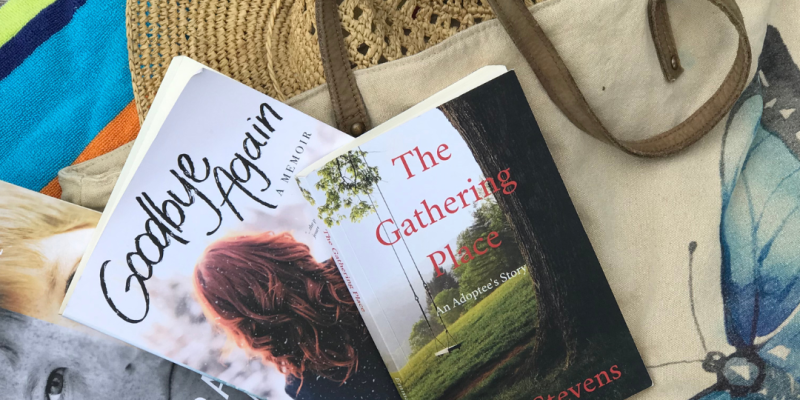
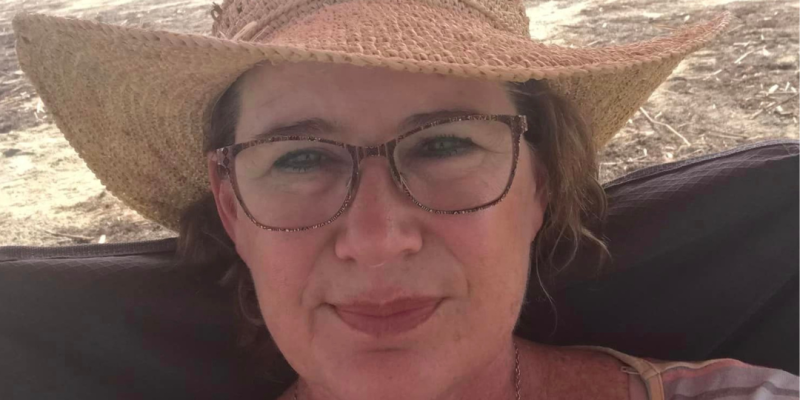
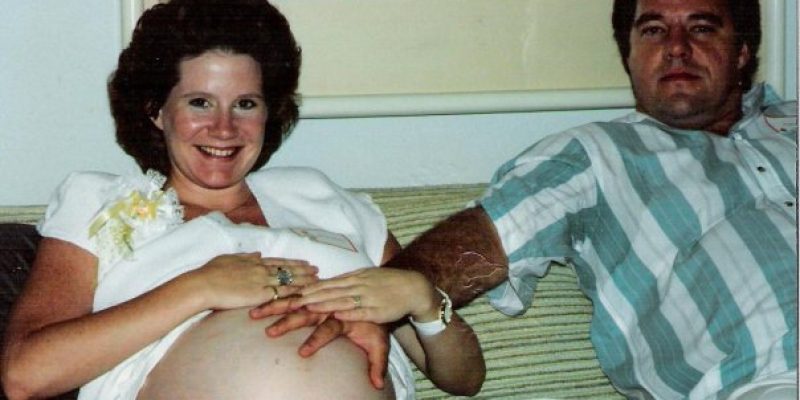
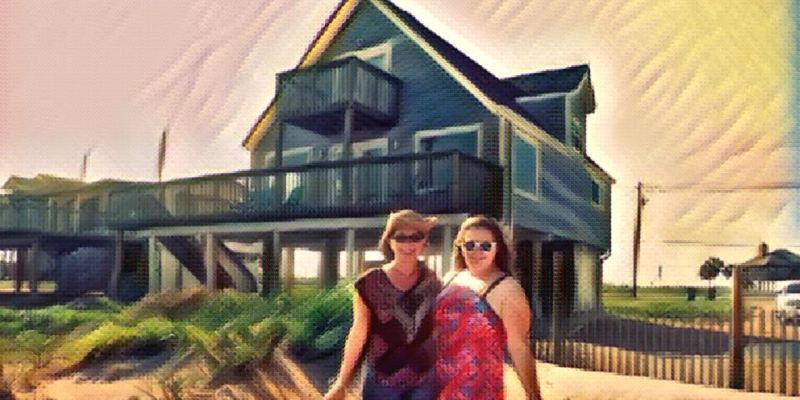
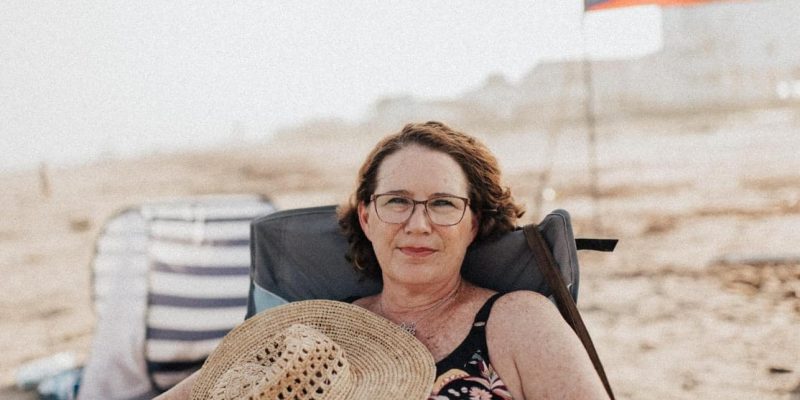
Goodbye Again
I started Candace’s “Goodbye Again” the next day down on the beach with a Dox Equis rather than a glass of wine. Waves crashed and seagulls cried, as I heard Candace’s voice rise from the pages, recounting her pregnancy and the indecision that followed. Early chapters ushered me back to my own unplanned teen pregnancy, culminating at the very beach house behind me.
Back in 1988, at 18, I’d sulked up those stairs and told my father I was pregnant and that Jack, my 32-year-old boss, was to blame. But I’d been lying. In truth, I wasn’t certain. I was so ashamed, I named Jack the father, never letting on any doubt existed. Luckily for us all, time would prove I’d guessed correctly. To make the whole beach weekend that much more time-warpy, it was Jack, my daughter’s father, who had rented my parents’ old home. Though we had split some 25 years before, we’d remained close, and he and my daughter had orchestrated the special Father’s Day weekend at the house she was brought home to.
Knowing where Candace’s story was headed, and hearing it in her own voice ingrained by our lengthy conversation the prior March, I cried well-before the toughest parts. I shuddered at how different my life would have been had I decided not to keep my child. I tried to imagine the desperation of not being able to go back or change your mind. The pain of never knowing what may have been. I tried to fathom living life without my child, to grasp the unimaginable loss of finding her, then losing her again, not to distance, or court decree, but to death.
As the sun set, I moved with “Goodbye Again” from the beach back to my bunk; back to the same bedroom where I had stood in front of my mirror thirty-odd years before analyzing my 4-month-old pooch, asking “Will I deny my baby a better life if I kept it? Do I not love him or her enough to give them away? Is wanting to keep my baby being selfish?” Needless to say, once on the verge of being a birth mother myself, reading this birth mother’s story at this time and place truly hit home.
Thus, I turned compelling page, after compelling page, never finding Candace’s intimate and vulnerable narrative too emotionally wrought to get through. Writing is cathartic, but it can be a slippery slope when your deepest emotions are clawing their way to the top. “A little goes a long way,” I recall my editor telling me. “Don’t make them need to put the book down,” she tactfully advised. And I can vouch that Candace’s editorial acumen, elegant prose, and honest story-telling smoothed the rougher edges of her heavy and heartbreaking story, never shying away from the hardest parts but also so tender in her telling.
Sharing the most beautiful and joyous parts of her journey back to her son, we rejoice at her reunion, and we cup our hands and blow along as she delicately fans the spark of reunion; attempting to feed but never smother the long-awaited flame.
Still, I read Goodbye Again slow, in tiny doses, and did not finish it at the beach. From the beach, I drove to my birth father’s ranch to help my step-mom prepare for the Fourth of July. Ironically, it was Tuesday the Fourth of July, after the hub-bub of festivities had passed, that I unknowingly returned to the book to find Candace preparing to join in a Fourth of July parade — the day she learns of her son’s passing.
A heart-wrenching chapter that again compelled me to stay with Candace as she reccounts her crumble under a mountain of grief. Subsequent chapters carry us through Candance’s brave but beleaguered journey toward healing and ultimate success at finding a way forward.
“Goodbye Again” leaves its readers the gift of solid assurance that whatever profound losses we may face in our lifetimes, there is a path through it. As Candace exemplifies in the book, it begins with forgiveness and gratitude, and can lead us to a place of grace, able to embrace another day even in the face of the greatest loss imaginable.
Take these Great Adoption Memiors Along this Summer
TWO AUDIO BOOKS FOR THE ROAD
After 22 hours of driving this past month, it makes sense that I listened to all of Gabrielle Glaser’s “American Baby” (10 hours and 37 minutes) and most of Gabor Maté’s “the Myth of Normal” (18 hours and 12 minutes). So it seems I need to find another 6 hours of drive time. I LOVE LOVE LOVED both books and want to do a full on post on each at some point. For now, let me just say GO GET THEM, as I include these following overviews:
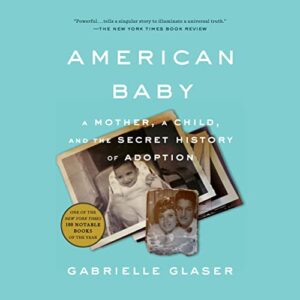 AMERICAN BABY, A MOTHER, A BABY AND THE SECRET HISTORY OF ADOPTION – A New York Times Notable Book, “American Baby” is in my opinion the next best adoption book since Primal Wound. Glaser pulls back the covers on the shocking truth about postwar adoption in America, as told through the story of one teenager, the son she was forced to relinquish, and their search to find each other. But Glaser also balances the narrative with a remarkably well-researched, brutally-honest dive into the origin, history, and culture of the adoption industry. She also highlights the disturbing impact of the predatory organizations that defined (and abused) many of the practices still in use today.
AMERICAN BABY, A MOTHER, A BABY AND THE SECRET HISTORY OF ADOPTION – A New York Times Notable Book, “American Baby” is in my opinion the next best adoption book since Primal Wound. Glaser pulls back the covers on the shocking truth about postwar adoption in America, as told through the story of one teenager, the son she was forced to relinquish, and their search to find each other. But Glaser also balances the narrative with a remarkably well-researched, brutally-honest dive into the origin, history, and culture of the adoption industry. She also highlights the disturbing impact of the predatory organizations that defined (and abused) many of the practices still in use today.
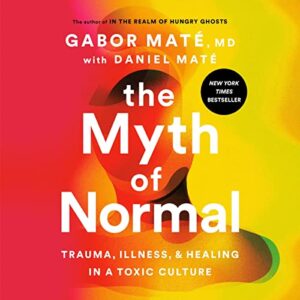 the Myth of Normal: TRAUMA, ILLNESS, & HEALING IN A TOXIC CULTURE – I just discovered Dr. Gabor Maté and now have five of his books on my reading list. Maté is a renowned addiction expert, speaker and author who is known for his expertise on trauma, addiction, stress and childhood development. While “the Myth of Normal” is not an “adoption book,” adoption themes arise throughout. Chapters titled “A Traumatic Tension: Attachment vs. Authenticity,” “A Sturdy or Fragile Foundation: Children’s Irreducible Needs,” and “Trouble at the Threshold: Before We Come Into the World,” are just a few chapters that grabbed me. I am currently signed up for Unravelling Adoption Bookclub with Beth Syverson, but admittedly have been too busy to contribute much. Check out her podcast and book clubs here.
the Myth of Normal: TRAUMA, ILLNESS, & HEALING IN A TOXIC CULTURE – I just discovered Dr. Gabor Maté and now have five of his books on my reading list. Maté is a renowned addiction expert, speaker and author who is known for his expertise on trauma, addiction, stress and childhood development. While “the Myth of Normal” is not an “adoption book,” adoption themes arise throughout. Chapters titled “A Traumatic Tension: Attachment vs. Authenticity,” “A Sturdy or Fragile Foundation: Children’s Irreducible Needs,” and “Trouble at the Threshold: Before We Come Into the World,” are just a few chapters that grabbed me. I am currently signed up for Unravelling Adoption Bookclub with Beth Syverson, but admittedly have been too busy to contribute much. Check out her podcast and book clubs here.
I returned home having yet to dive into David’s “Parallel Universes.” Since then, I have reviewed his book “Parallel Universes” here. though it is next on my list. If you made it this far in this post, WOW and THANK YOU. I know it was a long, but I hope a good read. I highly recommend you check out these adoptee and birth mother memoirs. On a small side note, I also met birth mother Amy Seek at the conference and wrote this review of her memoir “God and Jetfire” this past Mother’s Day. Enjoy the rest of the summer, and happy reading wherever your travels may take you.


